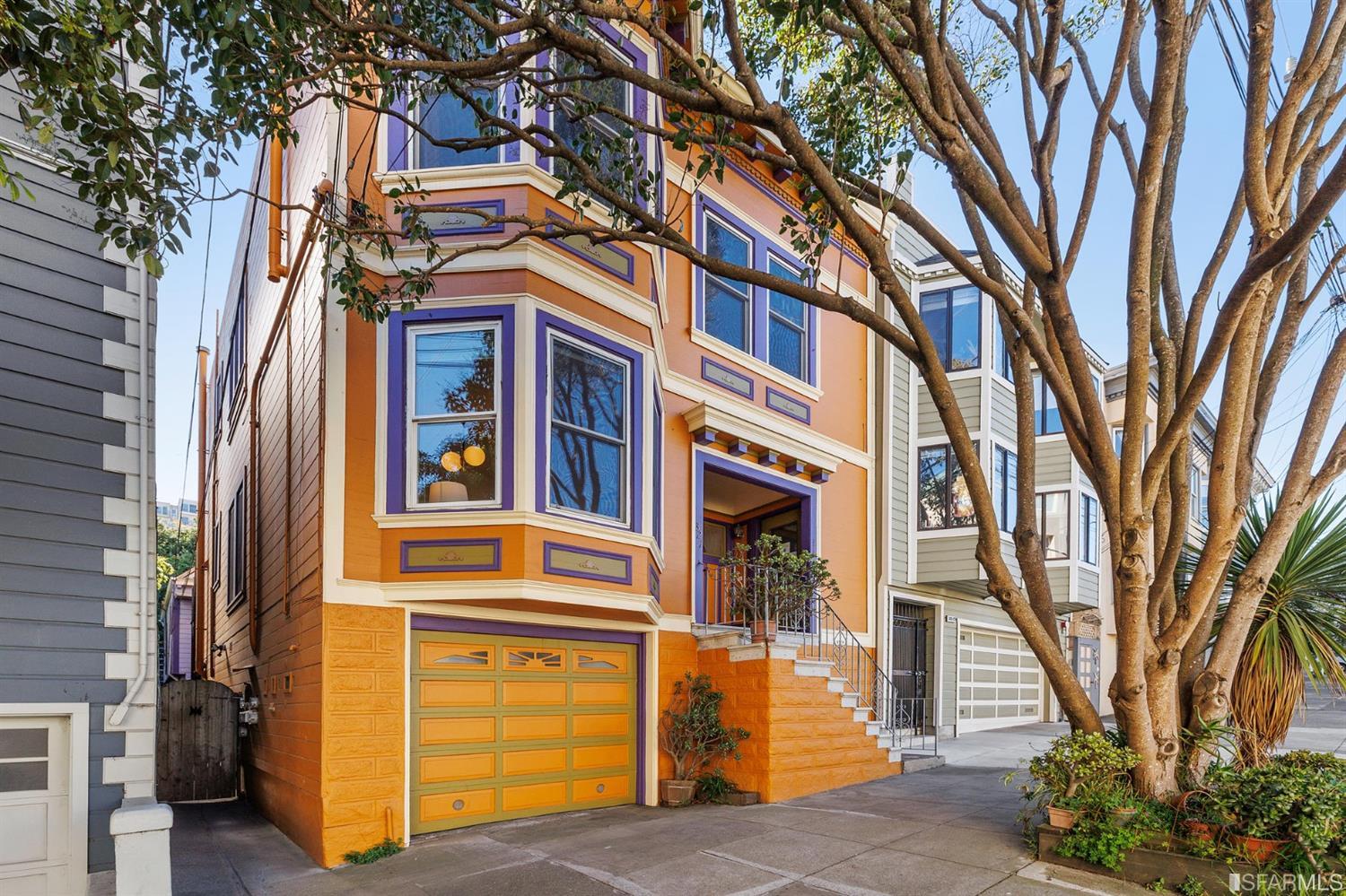In 2019, onetime publisher Florence Fang staged a press conference outside of her famous “Flintstones House” in Hillsborough, part of a campaign to gin up public interest in her then-ongoing fight with the city over her, ah, singular decorating style.
During that event, Fang constantly referenced the 1977 children’s book The Big Orange Splot, about a conformist neighborhood where all of the houses look identical until an accident paints one with an eye-popping blotch on the roof, and then pandemonium ensues.
Fang really, REALLY wanted to press the significance of that book, bringing it up probably half a dozen times. Now, Fang’s house does differ from the average Hillsborough home in more ways than just the color of her roof, but maybe she was onto something anyway: After all, how do we decide what color a house should be?
In San Francisco, repainting is one of the only significant aesthetic choices homeowners can make without a permit–that is to say, without the potential input of neighbors. This comes up today because of the recently listed 321 Clipper Street, a mostly ordinary Noe Valley Victorian now on offer with two beds and one bath for $899K.
We say “mostly ordinary” because you’ve already noticed the one thing that makes this place stand out: It sure is orange. And purple around the trim. But mostly a whole lot of orange.
Many sources on the Internet will try to quantify the most supposedly popular exterior colors for a house, usually with respectable sounding names like “dove white,” “tricorn black,” and “alabaster.” Oranges never make the list. You do see such homes, of course, along with bright red numbers, lime-green affairs, overwhelmingly purple abodes, and pretty much any oddball thing you can imagine. But it’s still not, well, usual.
We’ve spent a long time compiling information on whether the color of a home affects its value at market. Logically, it shouldn’t: After all, a new buyer can always repaint.
But it’s possible that color affects such decisions subconsciously: What if some shades just plain make people more amenable to a home? What if some are perceived as more or less valuable? What if we don’t really know why we gravitate toward certain colors–but we do anyway?
Data on this particular quirk of housing is hard to come by, so you’ll have to wait a bit for our findings. But here’s our (non-rhetorical) question for you, the savvy housing watcher: If you knew that repainting might reduce your home value down the line (again, hypothetically–actual results pending), would you do it anyway? What if a color–orange, perhaps–was shown to drive prices up? Would that matter?
Most of the things we do to improve the aesthetic appeal of our homes–remodels, repairs, renovations, expansions–also happily happen to increase value most of the time. But if a tradeoff must be made, what do you favor?
Does your satisfaction count for more–or does only the color of money matter?
As always, if you have any questions you can contact us directly, or throw them in the comments below. Make sure to subscribe to this blog, or follow us on social media @theFrontSteps too. And please do consider giving us a chance to earn your business and trust when it’s time to buy or sell Bay Area property. People like working with us, and we think you will too.








